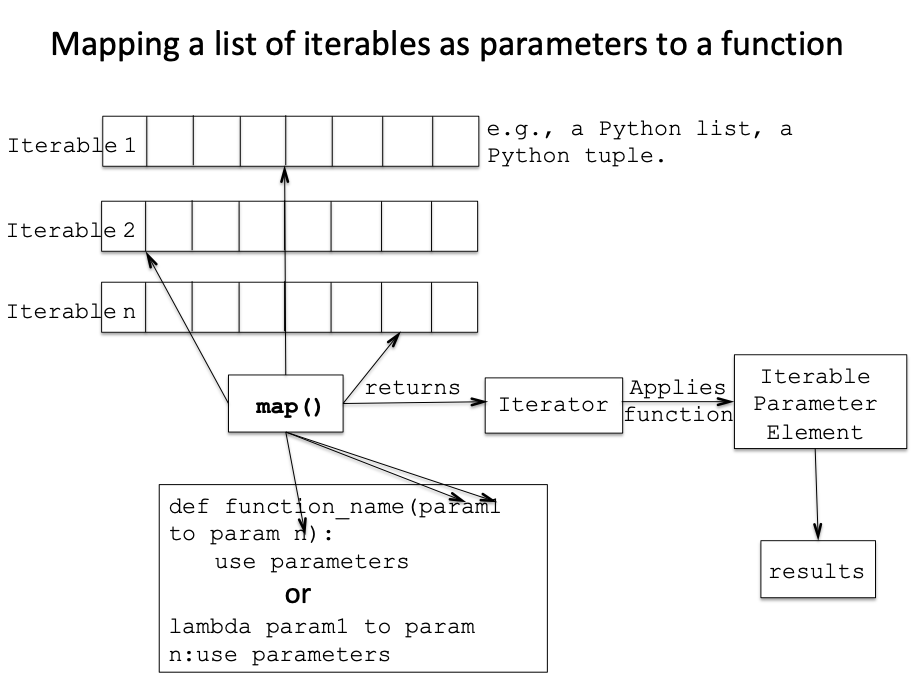Overview:
- The built-in function map() does a mapping between the following
- a function - either a regular function defined using def or an anonymous function defined using lambda
- the parameters of the lambda function
- one or more python iterables
and returns an iterator.
- The iterator when executed, for example using a, for loop – executes the function using its parameters. The parameters to the function are mapped to the python iterables passed to the map() function.
- Number of times the iterator is executed is equal to the count of elements present in the shortest iterable passed to the map() function.

Example – Using a lambda function with map():
|
# Example Python program to apply lambda function to Python iterables # using the built-in function map multipliedBy2 = map(lambda x:x*x, [1,2,3,4,5]); print("The sequence of numbers multiplied by 2:"); for i in multipliedBy2: print(i); |
Output:
|
The sequence of numbers multiplied by 2: 1 4 9 16 25 |
Example-Using a lambda function working on multiple iterables with map():
- It should be made sure that the parameter count of the lambda function and the iterables count of the map function to be the same. Else an error similar to TypeError: <lambda>() takes 1 positional argument but 3 were given will be raised.
|
# Example Python program to apply a lambda function # to multiple Python iterables using the map() built-in function oddNumbers = [1, 3, 5, 7, 9]; evenNumbers = [2, 4, 6, 8, 10]; primeNumbers = [2, 3, 5, 7];
# invoke the map() built-in function outputIterator = map(lambda x,y,z:x*y*z, oddNumbers, evenNumbers, primeNumbers);
# Print the return values of the lambda function by using the iterator for i in outputIterator: print(i); |
Output:
|
4 36 150 392 |